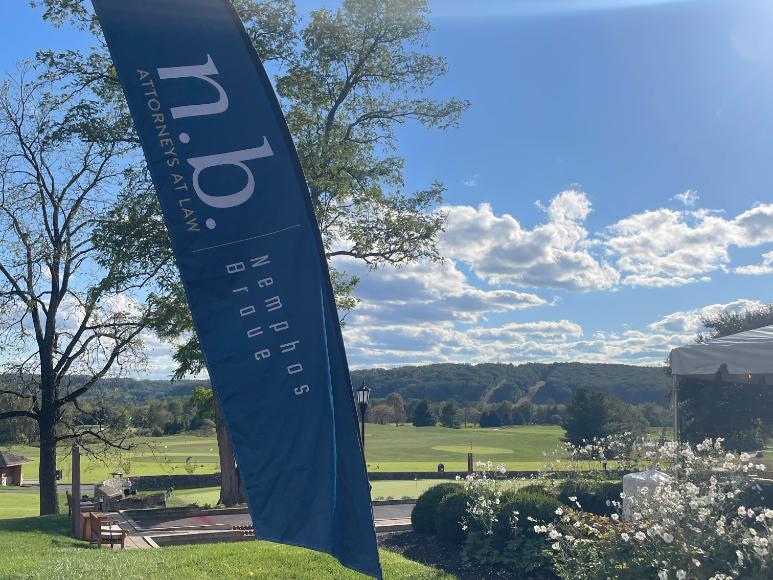On August 12, 2020 Maryland’s Joint Covid-19 Legislative Response Work Group gave a briefing with updates on Maryland’s progress in Governor Hogan’s Maryland Strong: Roadmap to Recovery plan. Find key takeaways from the briefing below.
Dr. Jinlene Chan, Acting Deputy Secretary
Public Health Services
Maryland Strong: Roadmap to Recovery
Key updates:
- Testing
- 1.5 million cumulative tests total conducted in the State of Maryland, averaging over 24,000 tests a day within the State.
- Contact Tracing
- Over 20,000 cases with over 30,000 contacts reached and interviewed by Contact Tracers throughout the State.
- PPE
- Over 72 million pieces of PPE distributed as of last week, with requests being fulfilled as we speak, including supplies for the November Election.
- Hospital Surge Capacity
- Approximately 6700 surge beds were identified, and we continue to make Advanced Medical Tents, ICU Modulars, and Alternate Care Sites available for Covid patients.
We are currently in Phase 2 of the Roadmap to Recovery.
- As stated by the Governor on July 29th, We are currently in a pause for further reopening plans as we observe trends and data.
- All counties have tested at least 10% of their population at this time, and continue to test throughout Maryland.
- We have recently issued additional guidance for nursing homes to allow for submission of alternate testing plans which will be evaluated by the Department to ensure that residents are safe.
- We have also provided updated guidance to allow for the use of specific Point of Care tests with reporting requirements and other instructions.
Increased Patient Capacity
- We have worked with hospitals and local jurisdictions to identify 6,700 beds for Covid-19 surge; including
- Baltimore Convention Center Field Hospital with Hopkins and UMMS
- Reopening closed hospitals at Laurel and Takoma Park
- Installation of 50 ten-bed Advanced Medical Tents statewide
- Additional 8-bed ICU modulars at Adventist Ft. Wash., Prince George’s Hospital, and UMMC Downtown
- Measures to stay in place for remainder of year
- Monitoring Bed Utilization
Covid-19: What We’ve Done
- Provided over 4,000 Kits of Essential Supplies and Covid-19 information sheets targeting African-American, Hispanic, and Haitian communities.
- Provided consultation and guidance regarding reaching minority communities to contact tracing team and serology survey team.
- Led the effort within MDH to disaggregate and analyze Covid-19 case and mortality cumulative data by race and ethnicity.
- Updated MHHD website with hyperlinks and information on critical updates such as the Maryland Health Connections open enrollment extension period, Covid-19 Multisystem Inflammatory Syndrome in Children (MIS-C), Covid-19 related testing information, and the GOCI (Gov’s Office on Community Initiatives) web page housing more translated information.
- Launching a multimodal, multimedia, and multilingual communications and messaging campaign that includes PSAs airing on WMAR/Bounce TV, Urban Networks/Radio One, and social media.
- Utilizing a mobile public health education unit to provide Covid-19 education and messaging to minority communities by selected zip codes.
- Providing funding to assist with Covid-19 outreach to minority communities to the five health departments with the largest jurisdictions.
- Providing support to HBCUs undertaking Covid-19 and minorities research projects.
- Utilizing transit wraps to communicate Covid-19 information.
- Utilizing printed information sheets distributed in minority communities to provide COVID-19 information.
Q&A
Senator Delores Kelley: I’m concerned with nursing homes and assisted living facilities trying to meet the requirements. It is not clear how we expect them to pay for the additional testing that is needed. Many of the patients in these facilities are on Medicaid or Medicare. Could you tell us where relief will be regarding required testing and what can be done in the interim?
Jinlene Chan: How we can provide support with the work we have been doing is to provide access to labs like the University of Maryland Baltimore. Additionally there is 10 billion dollars the federal government is allocating to nursing homes as well. The other component that is coming is some of the Point of Care tests. We are trying very hard to work with the nursing homes individually and as a group daily to address some of their concerns but we believe this is important and ultimately is about protecting the health of the residents.
Senator Delores Kelley: What would you recommend we say to them, or what you can say to them that would bring some relief during this interim?
Jinlene Chan: This is a requirement from CMS, that was issued back in May for weekly testing of the staff. For residents that are there, testing should be available and we have outlined guidance for what testing of residents should look like. To the extent that we are able to support we will try to do that and we are continuing to talk with our partners.
Delegate Shane Pendergrass: I have been struggling with the positivity numbers for a long time. It is now clear to me that the Hopkins numbers show a higher positivity rate then the state numbers. Can you explain why this is so not straightforward it seems cryptic?
Jinlene Chan: I would say that there are so many potential nuances. We have tried to pick numbers that we thought could be as consistent as we can make them, for example we report on tests reported to us on a single day. If we used the test collection date, the numbers would constantly be shifting. Because of that we feel it would be more confusing to explain the constant shifting so we selected what we thought would be the most consistent reporting number for positivity.
Delegate Shane Pendergrass: You’re suggesting that you’re not comparing the number of tests reported to the number of positives and negatives reported?
Jinlene Chan: No, meaning what we look at on a daily basis is all the test results reported to us and then look at the positive and the negative. What we are seeing right now at the national level is there are multiple data definitions and different ways that states are handling their own data. It makes it very difficult to compare apples to apples. In Maryland we’ve been very consistent from the beginning, we have not changed our methodology. We believe our numbers, when you look at the trends, that the consistency is there.
Delegate Shane Pendergrass: Do we have any granularity on what tests we’re running? What the population looks like for the test that we’re running? In particular the source.
Jinlene Chan: I think we are looking deeper into that right now and we’re beginning to get the information through CRISP. It’s imperfect because the feeds we get are directly from the labs themselves and the labs don’t usually collect exactly where the specimen may have been collected. It is a question of interest to us.
Delegate Shane Pendergrass: Would you know that you sent the nursing home tests from a particular nursing home to a particular lab?
Jinlene Chan: For the ones that we have been involved with we have been keeping very close track yes.
Senator Melony Griffith: What advice are we giving to election workers about safety?
Jinlene Chan: We have worked with a number of different entities and organizations to talk about their unique settings and situations to implement measures That will be the most protective of their own staff as well as the public that may be coming in. The Governor expanded the mask order which has been a very critical component. It is about the same components that we continue to emphasize for the public and at least the same principles apply.
Senator Melony Griffith: Will the state be providing written guidance and direction specifically related to election safety and considerations in that regard?
Jinlene Chan: The CDC has fairly detailed guidance related to election sites.
Delegate Sheree Sample-Hughes: My question relates to a document called Skilled Nursing Facility Advance Beneficiary Notice of Non-Coverage. Are you familiar with this document?
Jinlene Chan: I am not familiar with that particular one. If you detail it more, I’m happy to provide what information I can and certainly follow up with your office.
Delegate Sheree Sample-Hughes: This document is going out to persons in nursing homes and go specifically to whoever handles their business. It pretty much outlines that when someone has been tested and has tested positive for Covid that they are then put on Medicare and when they are no longer positive they then go back to Medicaid. The letter provides three options. If you would like to continue with Medicare, if you would like to pay $400 out of pocket per day for skilled nursing care or not. My concern is that we have so many people in nursing homes it is almost as if it is an eviction letter. Your average individual has no understanding of what this document is doing and how it impacts their loved one in a nursing home. There may be some way to ensure that everyone is of the understanding what that letter does and what it means and how it impacts their loved ones care.
Jinlene Chan: Thank you so much for raising that, if you have a copy of the letter that you could share with us we will certainly look a little deeper into it and provide more information back to you and the constituents.
Senator Paul Pinsky: Has the state Department of Education solicited from you the appropriate metrics that should be used to decide when to open in-person instruction for school?
Jinlene Chan: We work very closely with Superintendent Salmon and her team and have been doing so on a number of areas including childcare and other metrics and school. It is a discussion of what ultimately the public schools will be able to do and there is CDC guidance out there as well.
Senator Paul Pinsky: The question is have you been in discussion with the state Department of Education on very clear and explicit markers and metrics to guide whether schools should allow in-person instruction?
Jinlene Chan: I think that the metrics are really something that when we look at the statewide ones similar to the ones I shared earlier looking at community spread and positivity, those are some other measures that we’re looking at not only for schools but when we look at reopening as a whole, there hasn’t been any guidance specific to thresholds for which it is safe per se. It is a combination of not only the metrics you’re looking at and how we can safely provide physical distancing and transportation of students in a safe manner, as well as the protection of staff. There are operational considerations that must be part of the discussion.
Senator Paul Pinsky: Many school systems are unclear on how to proceed. I haven’t seen any evidence of enforcement of large gatherings. Is that a voluntary request or is the state government planning on enforcing it?
Jinlene Chan: We have been closely involved in working with the Maryland State Police in developing enforcement guidelines. We also have been working very closely with all of the local law enforcement and local health departments and as appropriate with local liquor boards as part of enforcement. There has been enforcement with large gatherings. I can provide more detail as a follow up.
Senator Paul Pinsky: If you could get back to us on how many events or large gatherings have been shut down and how many enforcement actions have been taken, I think that would be very illuminating.
Senator Clarence Lam: Following up on Delegate Pendergrass’s question. There is no standard methodology for calculating the positivity rate and to try to answer her question as well, there are differences between how they are calculated. My understanding is that Hopkins uses a moving average in calculating the positivity rate. They’re not looking at the daily number of new cases that are being resulted and the daily number of new tests that are being done, but it’s a moving average of the number of new cases and the moving average of the number of new tests that are done. That’s how they’re able to calculate their positivity rate. I think the state is counting a number of tests being done whereas Hopkins maybe trying to wean out those who may have been tested more than once. I think it would be helpful to have the actual methodology that the state is using. Is it something that could be shared with us or the formulas that are being used?
Jinlene Chan: Yes, absolutely. Our team has had multiple conversations with Hopkins in terms of the different methodologies. They acknowledged the differences in our methodology.
Senator Clarence Lam: Positivity rate is just one metric. There is no perfect metric and needs to be viewed in a spectrum of the other data that is available. On other sources we are consistently shown as being above 5%.
Jinlene Chan: We will provide more information on our methodology and the Hopkins methodology which are different and contributes to the difference in calculations.
Senator Clarence Lam: While testing has increased which is good, contact tracing I’m still hearing that the turnaround time can be prolonged in the community. If someone is getting a test done at Labcorp or Quest I’ve heard that it can take 7 days or 14 days. I’ve had patients and employees tests take up to 18 days to come back. Without a proper turnaround time clinically and diagnostically it’s useless. Even from a contact tracing standpoint, anything over three days you’re not reducing the transmission rate to make contact tracing effective. Are there any steps being taken to address the turnaround time for these tests?
Jinlene Chan: Absolutely. We saw the turnaround times creep up over the summer and we know that was the impact of the huge surge that other states were seeing that was then landing on these commercial national labs so we have seen long turnaround times and we had a lot of discussion with these commercial labs. Labcorp now has a median turnaround time of around 2 days or less. A long turnaround time does not help the individual or our contact tracing efforts. We are working with the University of Maryland Baltimore to enhance testing capacity there. We have contracted with in-state labs to minimize the turnaround time that might be attributed to transit. Those are some of the strategies we’ve taken to impact that. Knowing many patients still access testing through their primary care physicians and hospitals that may still use commercial labs those are very important conversations that we continue to have with the national chains as well. We are encouraged that the turnaround times have decreased.
Senator Clarence Lam: I think it is important to note when citing test results on your website in the future, to distinguish between the rapid antigen test versus the standard molecular PCR test then. There are some differences there and how they are calculated could fling the numbers one way or the other. What is being done to proactively ensure compliance with the Governor and Secretary’s nursing home order to keep families informed?
Jinlene Chan: We will continue to emphasize the importance of making sure families are informed. Keeping family informed is very critical and we will certainly go back and reemphasize that message.
Delegate Joseline A. Pena-Melnyk: Given the fact that the University of Maryland Pathology Associates is now telling nursing homes that it cannot contract with them. Will the Maryland Department of Health grant nursing homes an extension for compliance? Will they be able to get some help to be able to comply?
Jinlene Chan: We are going to continue to have discussions with our skilled nursing partners to understand where the challenges are and what is needed to be able to meet the requirements by CMS. There is 10 billion dollars that the federal government has allocated to support skilled nursing facilities and all of the various work including testing that they’re doing to protect their residents. Ultimately I think it is about trying to make sure that residents are protected and we focus on their health and safety.
If you have any questions or concerns explore our COVID-19 resource page, or reach out to us directly at 410-321-8200.




